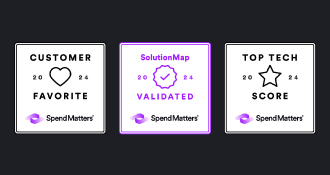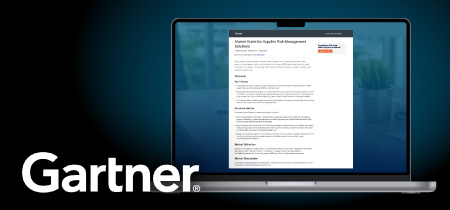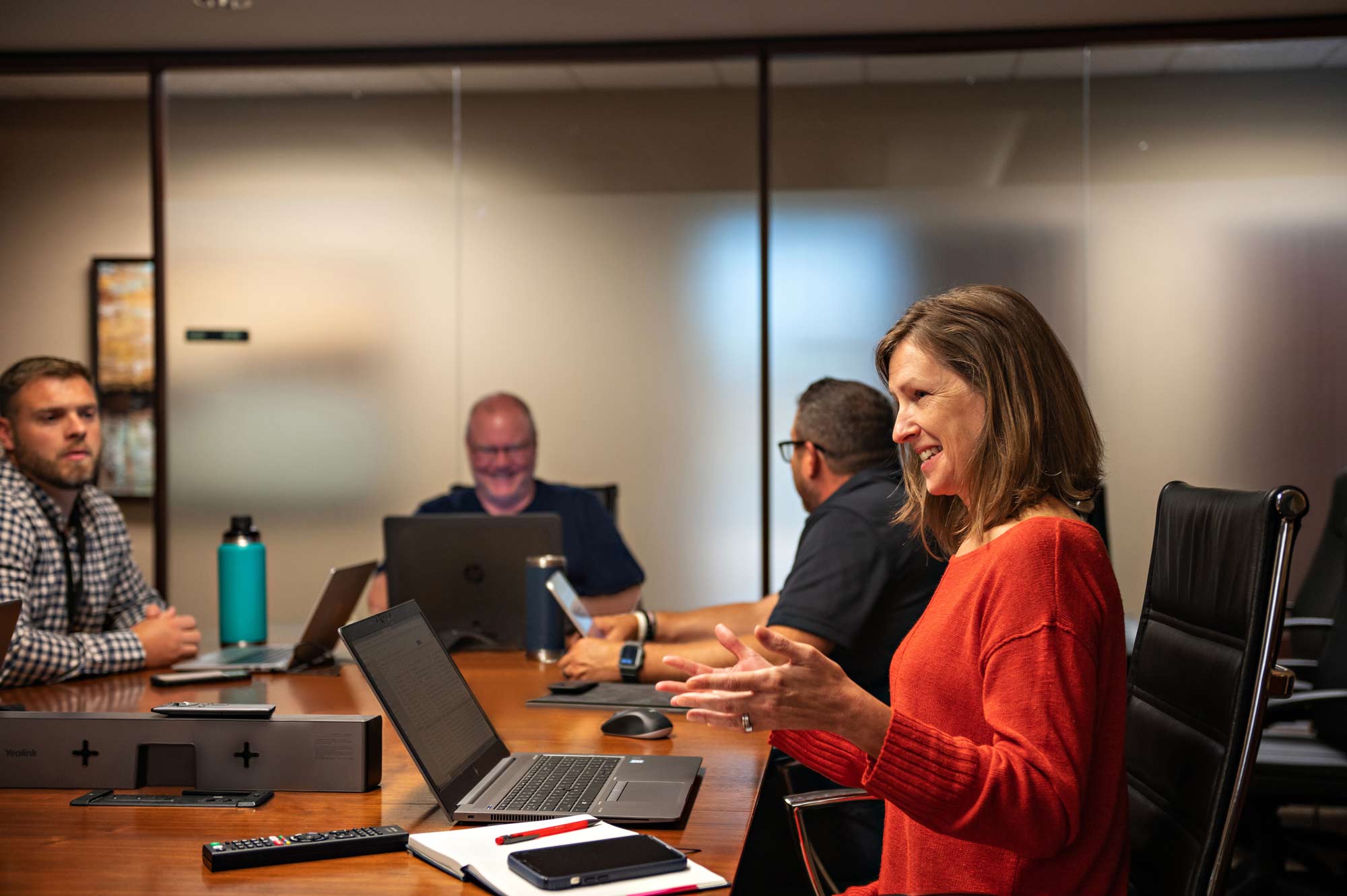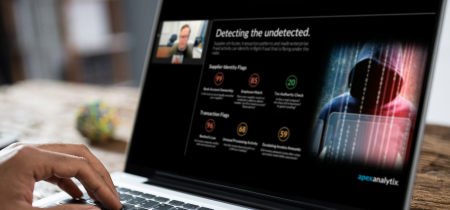John F. Kennedy said “change is the law of life. And those who look only to the past or present are certain to miss the future.”
I’m known to say that changes in procurement or AP can have some pretty dramatic consequences for supplier payment. Changes could be full-blown ERP migrations to the cloud, system upgrades, M&A, minor process changes or staff turnover. The chart below shows two examples of this. These are two real-world scenarios that many companies go through and the impact of these changes.
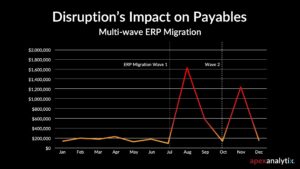
The company represented by the data above is a US fast food chain that is using apexanalytix firststrike® duplicate payment prevention. They start out the year with a steady amount of about $200 thousand in duplicate payments prevented every month. These are issues that come about from day-to-day payment processes. Then they migrated from an on-premise ERP to a cloud instance. Guess which month they transitioned?
The period of transition corresponds with the spike of 1600% possible overpayments. Fortunately for this company, these overpayments didn’t actually happen because of the software that functions as a duplicate payment control. The message here is that when a company deploys new technology to make the business more efficient, there is massive change. And change, even good change, creates overpayments. You can see in the chart there was a massive spike and then there was another one. It doesn’t go away right away. And the additional overpayments above the previous average is over $3 million – In just 4 months.
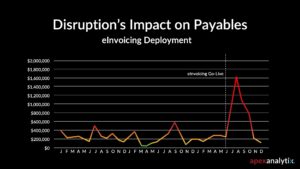
The chart above shows what happened when there was a deployment of a large well-known eInvoicing platform for a nearly $50B large financial institution. eInvoicing is an important aspect of reducing manual processes, but when it occurs, there are overpayments. Suppliers send invoices multiple ways, send them twice; they call asking where their payment is and AP sometimes overrides controls to get the payment out. We have found times that a single invoice was paid up to six times!
During the four months of the deployment, there was a 300% increase in overpayments which were discovered when the recovery audit was conducted.
There are steps you can take to prepare for change and avoid the risk of overpayments happening during your system transitions and upgrades, automation projects and organizational changes like mergers and acquisitions.
#1 – Configure your ERP system better by doing a benchmark recovery audit.
Your accounting system: SAP, Oracle, JDE, homegrown…should have built-in duplicate prevention algorithms. The trick to making these work well is to strike the balance between catching the most duplicates without creating too many exceptions and delays in payment processing. The best way to do this is to get insight into what is causing your duplicates. Before you begin your ERP upgrade or migration, complete a third-
party recovery audit. You will gather information that will improve the setup of your new system.
How? A recovery audit pinpoints your process weakness, system gaps, and offers recommendations on how to improve them. Over the years, we’ve categorized and isolated common reasons for the errors that lead to overpayments, things like switched characters, multiple related vendors, inconsistent invoice coding, rebates, returns and more. This information can help you configure your primary controls in the ERP software better. Recoveries from the audit can even be used to invest in software or systems that will improve your P2P process.
#2 – Invest in duplicate prevention software.
We looked at a set of clients who had started with an audit, and then implemented apexanalytix firststrike duplicate prevention. Here is what we found:
The audits found duplicates, but there were large amounts that were not recoverable. This is because they had aged too long, the supplier was no longer doing business with the client, or a host of other reasons. In the case of one Fortune 500 client, we identified over $8 million in duplicates in just one audit engagement, that couldn’t be recovered.
When firststrike was implemented it found more duplicates than an internal process, ERP system, or our audit.
For one client, firststrike software finds and prevents an average of $50 million each year. For another, the software found nearly $500 million one year. (It was a year after some big changes!)
Companies who use prevention software save big money on contingency fees.
With software that is finding 98% to 99% of duplicates and preventing them, you can direct apexanalytix auditors to their highest value work. The highest value work that our audit teams perform for our clients these days are reviews to identify missing, hidden, or unapplied credits on vendor statements. We have special teams with specific skills in analysis, supplier communications, and accounting to find and return these credits to you. Contract compliance is a rapidly emerging high-value audit area and requires a different, advanced set of skills and understanding of the entire procure-to-pay process.
#3 – Get on a regular schedule of audits and duplicate prevention software upgrades.
I’m a broken record when it comes to change and the impact it has on audit findings. I know from experience that as soon as you upgrade, consolidate or migrate your ERP system(s), acquire a company, add an accounting system, change your procurement process, or experience a major business disruption (remember COVID-19?), there will be a spike in vendor credits, duplicates, rebates, returns, unapplied cash, contract non-compliance, and sales and use tax errors.
On the duplicate prevention front, make sure your software is current. My audit team uses the same software that our clients implement to prevent duplicates. So, our developers get feedback from two user bases: the internal pros who use it to perform the duplicate review, and the analysts at our client companies.
We’re always changing to keep up with best practices. And that’s the best kind of change there is.
Phil Beane is apexanalytix’s Chief Operating Officer. As COO of Global Field Operations, Phil leads apexanalytix’s commercial and retail audit teams and apexanalytix’s international operations. His focus is on ensuring the highest level of customer satisfaction and value creation. Phil is responsible for delivering value for commercial clients globally, which includes owning apexanalytix’s end-to-end audit and software implementation/support and overseeing processes from data acquisition through service delivery while ensuring the highest level of customer satisfaction. Having joined apexanalytix in 2004, Phil has almost 18 years of experience in our industry and has served the company in various capacities, most recently as the Senior Director of Data and Delivery responsible for global data acquisition and software implementations. He also served proudly in the US Army with the 82nd Airborne Division for 4 years as a Communications Specialist.

